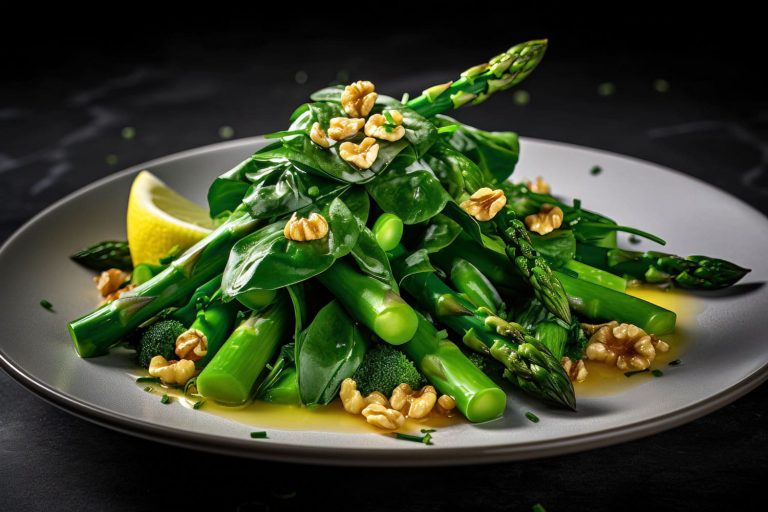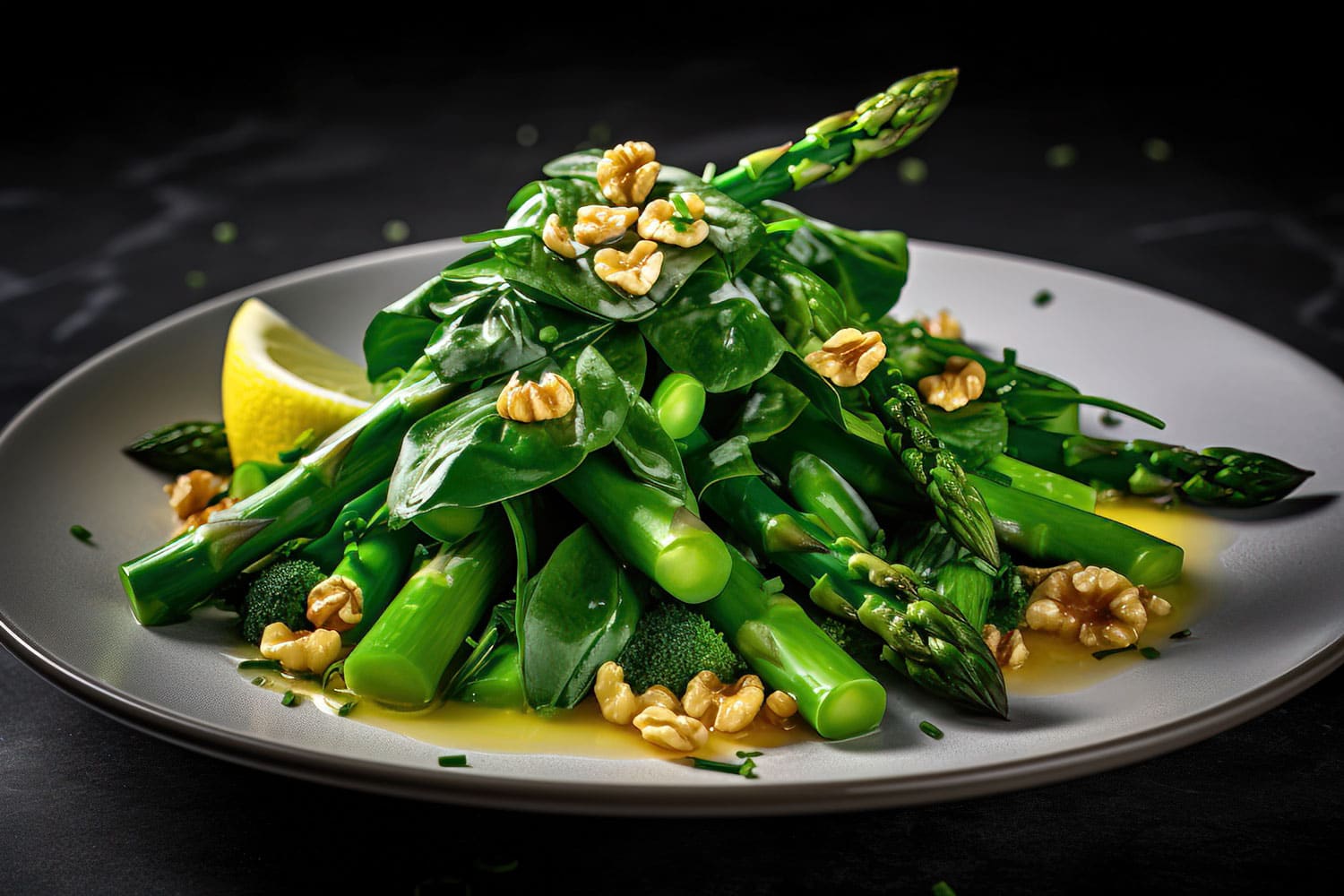Things to know
- Asparagus as a healthy vegetable: Asparagus is not only delicious, but also very healthy. It is rich in vitamins (especially vitamin C, K and various B vitamins) and minerals such as potassium, phosphorus and iron. In addition, asparagus is low in calories and contains a lot of fiber, which is good for digestion.
- Asparagus season: The asparagus season usually begins in April and traditionally ends on June 24, St. John’s Day. During this period, the vegetables are particularly fresh and aromatic, as they are offered regionally and seasonally.
- Green Asparagus vs. White Asparagus: Green asparagus has a stronger flavor and contains more healthy nutrients compared to white asparagus. The main difference in cultivation is that green asparagus grows out of the ground under the sun, while white asparagus never sees the light of day, thus does not form chlorophyll, which is responsible for the green color and is dug up for harvesting….
- Broccoli as a superfood: A real superfood! It contains many vitamins, minerals and phytochemicals, which are said to have anti-inflammatory and even anti-cancer effects. In addition, broccoli is rich in fiber and has few calories.
- Baby spinach vs. regular spinach: Baby spinach is more tender and has a milder flavor compared to regular spinach. It is harvested before the leaves are fully grown. This makes it particularly suitable for salads and raw preparations.
Frequently asked questions about the recipe
-
Can I also use white asparagus for the salad?
Yes, you can also use white asparagus. Be sure to peel it thoroughly before blanching and possibly leave it in the pot a little longer, as it has a firmer texture than green asparagus.
-
How long does the asparagus salad keep in the refrigerator?
The salad will keep in an airtight container in the refrigerator for about 2-3 days. However, it tastes best freshly prepared, as the vegetables are then still particularly crunchy.
-
Can I prepare the asparagus salad without vinaigrette?
Yes, you can make the salad without vinaigrette. Alternatively, you can use a different salad dressing or just season the vegetables with a little lemon juice, olive oil, salt and pepper.
-
Can I adapt the recipe for larger quantities?
Yes, the recipe can be scaled without any problems. You can simply increase the ingredients in proportion to prepare the desired number of servings. When blanching, be sure to cook the vegetables in several batches so they are cooked evenly.
-
Can I prepare the salad with other vegetables?
Of course, you can also prepare the asparagus salad with other vegetables. For example, sugar snap peas, green beans or snow peas also go very well with this recipe.

